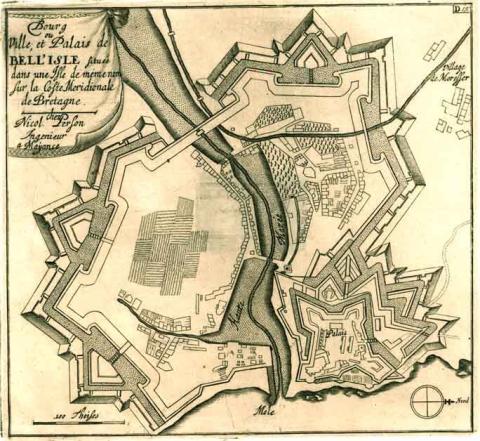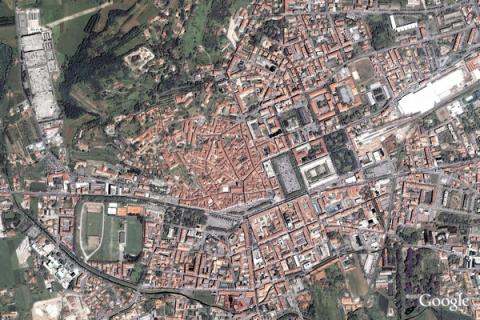Aire-sur-la-Lys
History and description
A town of medieval origin, situated on the left bank of the Lys, Aire-sur-la-Lys was besieged on numerous occasions during the 16th-17th centuries, including one by Vauban in 1676, during the war of Holland. In 1540, the Spanish chose to erect their first modern constructions. These works were followed by the construction of ten ravelins, eight bastions and eight hornworks. The pentagonal Saint Francis fort was constructed in 1642. Falling to the French in 1676, Aire was absorbed into the second line of the Pré Carré in 1678.Vauban established two projects of fortifications in 1686 and 1688. He also created a new fortified urban wall on the basis of the medieval fortifications to the east of the town. On the exterior, he retained the two hornworks. The fort Saint-François had its ramparts restored and was bolstered with barracks, officers’ quarters, a chapel, a powder keg, etc. The engineer Charles Robelin went on to add two ravelins restored and excavated at the end of the 17th century. The defensive arrangement was rounded off with flooded ditches filled with drains and streams converging toward the town. These works were carried out between 1680 and 1690. After 1740, other defensive improvements were set out: several ravelins were expanded and counterguards were added.
Current state
There are very few existing remains of the Aire-sur-la-Lys ramparts: the bastion de Chanoines to the south-east; the powder keg of the bastion Beaulieu, the coffer-dams and the entrance to Lys in this same bastion to the north-west; a dam, namely the remains of a coffer-dam on the Lys and a barracks to the south-west: the caserne de Listenois (barracks of Listenois). Two medieval gates also remain standing. Of the fort Saint-François, known as fort Gassion since an undefined period, just the main gate is left. A boundary wall traces the former ramparts of this fort, which was demolished in 1927. Within the town, avenues and ring-roads now lie in place of ramparts which were demolished in 1893. To complete the study, a relief map of the town should be consulted, drawn up to a 1/600e scale in 1743 by the engineer Nézot, restored in 1780, and preserved at the musée des Beaux Arts (Fine Arts museum) of Lille. This map gives an insight into the town after the works of 1740, in preparation for the war of Succession of Austria.
Aire-sur-la-Lys
Aire-sur-la-Lys
50° 38' 18" N, 2° 23' 45" E
Type
urban wall
Engineers
Adrien de Bloys, Sébastien le Prestre de Vauban, Charles Robelin
Department
Pas-de-Calais
Region
Hauts-de-France
Bibliography
- BRAGARD (P.), CHEUVA (P.), COMBEAU (Y.), (et alii), Étoiles de pierre. Voyage en Nord Pas-de-Calais, Villeneuve d’Ascq, 2003.
- HANSCOTTE (F.), FAUCHERRE (N.), La route des villes fortes en Nord, Paris, 2005.
- SALAMAGNE (A.), Vauban en Flandre et en Artois : les places de l’intérieur, Saint-Léger-Vauban, 1995.
- WARMOES (I.), Les plans-reliefs des places fortes du nord dans les collections du Palais des Beaux-Arts de Lille, Lille-Paris, 2006.p. 56-57.
- WARMOES (I.), Le Musée des Plans-Reliefs, Paris, 1997, p.33.

